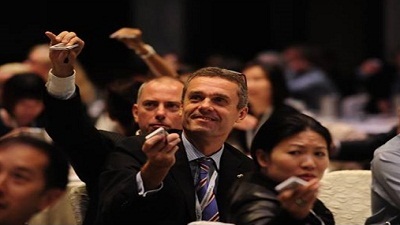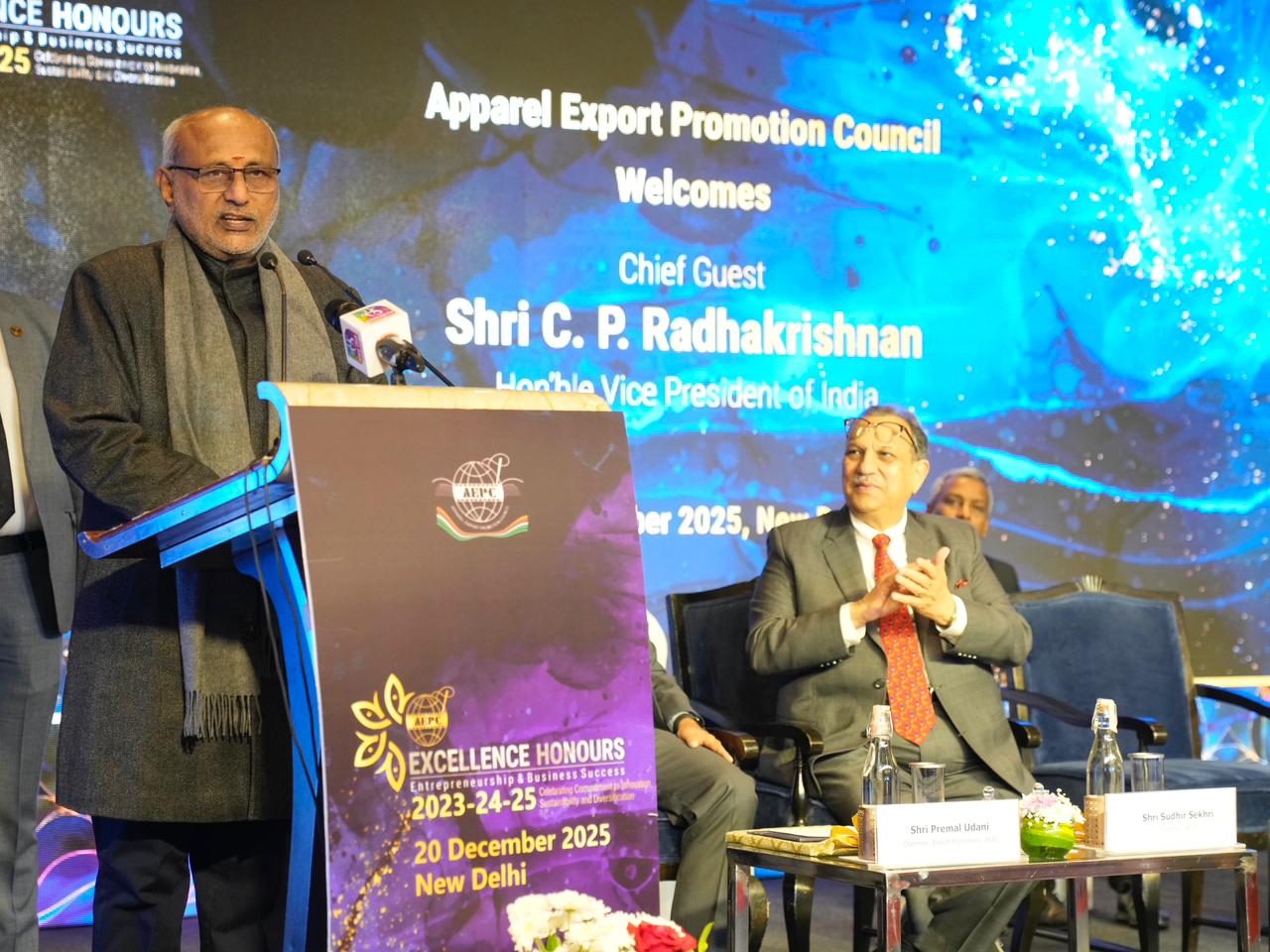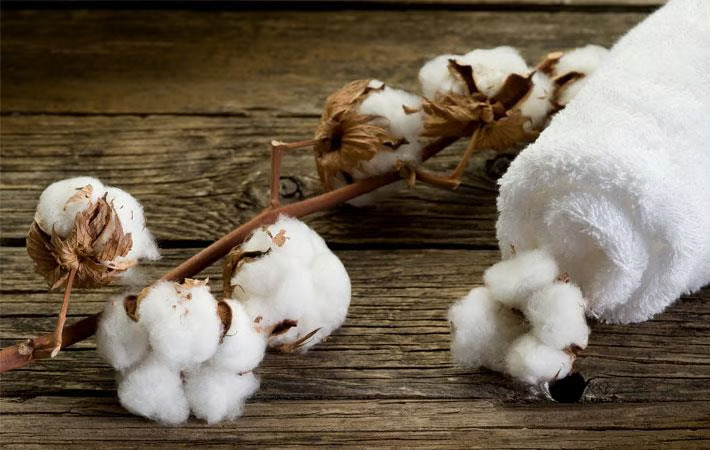FW
With a broad coalition of industry organizations, trade unions, civil society organizations, the Dutch government have tabled an agreement to achieve practical improvements in and ensure the sustainability of the international garment and textile supply chain. In fact, they want to address problems such as dangerous working conditions and environmental pollution.
The next steps in this process will be to secure funding of the agreement and have it signed in June by at least 35 companies in the sector, who together represent at least 30 per cent of sales in the Netherlands. The parties to the agreement will then also sign it. The agreement has been drafted under the guidance of the Social and Economic Council of the Netherlands (SER).
According to Lilianne Ploumen, Dutch Minister of Foreign Trade and Development Cooperation, this widely supported agreement, enterprises and civil-society organizations are taking a great step forward in combating malpractices in the garment and textile industry in developing countries.
They will, together endeavour to improve working conditions in these countries and make the manufacturing process more environmentally friendly. This is very good news for all those people who are still working excessively long days in dangerous conditions for very low pay. It’s also good news for the industry as a whole and for the consumer: everyone will be better off as a result.
Garmex Saigon went to the US recently to sign a franchise contract to exprt Gramicci, a brand of outdoor clothing and sportswear with a distribution network in seven states in the US and on Amazon. According to Le Quang Hung, chair of Garmex Saigon the company finds it necessary to follow a new development way in the context of deeper global integration, especially as the Trans Pacific Partnership Agreement (TPP) has been signed.
Hung says the franchise deal will take full advantage of both Gramicci and Garmex Saigon. Gramicci has advantages in distribution network, but it is weak in production. Meanwhile, this is the strong point of Garmex Saigon. What Garmex Saigon can expect from the contract is that it would be able to take the initiative in programming its production and looking for materials, minimizing risks and making fatter profit.
As per the contract, Garmex Saigon will exclusively exploit Gramicci brand for five years, for which it will pay 3 per cent of total annual revenue to the US brand. In the immediate time, Garmex Saigon will use Gramicci’s designers in the US, who understand the culture and taste of local consumers. Products will be made in Vietnam and then exported to the US to be distributed via Gramicci’s network.
Meanwhile, Garmex Saigon hopes it can earn $18 million in revenue from brand exploitation by 2018, which accounts for 10 per cent of the company’s total revenue. The move taken by Garmex Saigon is described as a ‘daring move’ in the current conditions of the Vietnam’s garment industry, where 85 per cent of companies just do outsourcing for foreign partners and pocket only 25 per cent of the product value.
"The opening session of the 11th Prime Source Forum 2016, Hong Kong that started today and is on till March 15, focused on sustainability as a practical and realistic approach going beyond just a cosmetic or marketing activity. Prime Source Forum, the two day event in its current edition, has been addressing sustainability concerns all these years. However, this edition deeply stresses on practical approach and solutions."

The opening session of the 11th Prime Source Forum 2016, Hong Kong that started today and is on till March 15, focused on sustainability as a practical and realistic approach going beyond just a cosmetic or marketing activity. Prime Source Forum, the two day event in its current edition, has been addressing sustainability concerns all these years. However, this edition deeply stresses on practical approach and solutions.

In the keynote address ‘Implications for a sustainable development of the fashion world following the G7 and COP21,’ Tino Zeiske, SVP, Corporate Responsibility, Metro AG said post G7 summit last year in Germany, where global leaders came together as a community of social responsibility and resolved to the statement that ‘we are here to shape future together’, later in September 2015 in the US the forum came with 17 sustainable development goals and in December at Paris COP21, a 190 member committed a target of lowering of 20 of temperature.
The outcome of these forums indicated, though there’s a higher aspiration on all such concerns but action is lagging. He added business must act as new activists and find business opportunities in these. Talking about carbon emissions, Zeiske said, “Yes we are all committed on ‘S’ word as an agenda but still global carbon emission levels are going up, from a 4,500 per capita level earlier, emission level today is at 5,000.”
Zeiske emphasised, “Global inequality is another concern, in spite of progress in developing world the gap between rich economies and poor countries is only widening further. Two hundred years ago, it was three times that of poorer countries, increased to 35 times fifty years ago and today the rich countries are 80 times richer than the poor countries. This imbalance is creating tensions that businesses cannot afford to face.”
He indicated that there are five significant implications to the scenario. The first one is low carbon approach, where dramatic regulatory changes in key markets are going to be there. Most governments will have to come with regulations like Germany already has regulations in textiles. “17 Sustainable Development Regulations by 2030 may sound like a threat, but it is also a business opportunity. Companies need to make it as a strategic move. Targets have to be set, soft policies and goals don’t hold true,” he emphasised.
According to him, the second implication is to understand that it is critical to do the calculations, because of the climate catastrophe, because of terrorism etc.; there can be a lot of disruptions in supply chain that needs to be accounted for. Consumer engagement in their hearts and minds is the third important implication of sustainable developments, as there cannot be any progress unless we engage consumer. It is the industry’s job to make it look more glamorous and making sustainability as the marketing case.
Innovation in digital technology is the fourth important implication. Technology so far is proactively being applied at the front. The need is to take it to the back end level, engaging right at farmer level and that could be a great game changer. For example, Metro in India has gone to the farmers and is creating collection centers to minimise waste, the farmers are asked to drop their waste at these centers. The innovation that has been applied is what we have given them. Through the electronic payment cards the farmers get their money the very next day that was not happening earlier.
The fifth and final implication according to Zeiske is “Collaboration across the industry,’ which is the key amplifier. It would be important to see how industry especially the smaller companies can leverage this and make this as an opportunity,” he concluded.
This year, Ethiopian Minister and Special Advisor to the Prime Minister Arkebe Oqubay and Tino Zeiske, Senior Vice President for Corporate Responsibility at Metro Group are the is the keynote speakers at PSF. The two day event as is the annual meeting place for senior executives to discuss challenges and opportunities that stakeholders across the global fashion supply chain are facing in the industry.
The United States has been working with Kyrgyz apparel manufacturers since 2014 to optimise production and marketing in order to tap into multi-billion dollar export markets by targeting major retail chains and branded stores in Europe and CIS.
The initiative, called USAID, hosted a business-to-business presentation of the production capabilities of the Kyrgyz apparel industry for foreign retailers. The retail buyers were highly impressed by the magnitude of apparel manufacturing in the Kyrgyz Republic, and by the advantages in flexible product development, lower logistics costs, and dramatically shorter lead times that Kyrgyz manufacturers have compared to many international competitors.
As a result of this meeting, Kyrgyz producers immediately signed and fulfilled contracts to export more than a million dollars in clothing, primarily men’s suits. With USAID support, 22 leading manufacturers in the Kyrgyz Republic that employ over 1,700 workers have joined the initiative to share best practices and improve their operations and marketing efforts. After expanding sales to current markets, the project will focus on exports to the European Union and the United States.
USAID is a four-year project that works with individual firms and stakeholders in the garment, tourism, and construction industries to improve productivity, access to markets, and management capacity to boost competitiveness in both domestic and international markets.
Haryana will set up a textile park at a cost of Rs 181 crores. Haryana is one of the largest producers of cotton in North India. Haryana produces 20 lakh bales of cotton every year but is not able to sell more than three lakh bales within the state. The trade has to bear the expenses on transport of goods to Punjab, Gujarat and other states.
The textile park would solve these problems and help growers find a market for their produce. The park would be set up in either Sirsa or Fatehabad. Out of six lakh hectares of land where cotton is produced in Haryana, nearly three lakh hectares are located in Sirsa and Fatehabad alone.
The industry hopes the textile park will have a flatted factory concept, a plug and play model, and a synchronised value chain with a processing industry and weaving industry to keep the state intact as a preferable investment destination for an export and textile hub.
A Rs 14 crores incubation center would also be set up in Haryana for skill development of youth associated with the textile sector. The readymade garment sector in Haryana is growing at a rate of 25 per cent.
Cotton farmers in Maharashtra say the decision to cut prices of genetically-modified cotton seeds and slash royalty fees will significantly reduce their cost of production. The measure has come as a relief for individual cotton growers who are caught in crop failure, drought and indebtedness.
Maharashtra is India’s top state in terms of area under cotton cultivation. Genetically modified cotton is grown on 96 per cent of the total area under cotton cultivation in Maharashtra and the three cotton-growing regions—Vidarbha, Marathwada and Khandesh—see a sale of nearly 10.5 million packets of GM cotton seeds every cotton harvest. Because 96 per cent of the entire cotton growing area in India is under hybrids now, it is important to reduce the farmer’s cost of production.
Apart from a reduction in prices of GM cotton seeds, the royalty Monsanto Mahyco Biotech charges from seed firms in exchange for its patented cotton seed technology has been slashed by 74 per cent.
Farmers from Andhra Pradesh bought hybrids in Maharashtra due to the lower price last year. But those hybrids were meant for Maharashtra’s climatic conditions and soil and not suitable for Andhra Pradesh. So the uniformity in price makes sense.
Korea is providing funds for Pakistan’s technical textile industry. This will include technical assistance, machines, equipments and manpower training. The funding is likely to be provided at the start of the next fiscal year. The project will help initiate and establish the emerging field of technical textiles in Pakistan.
The proposed center will be a hub for excellence to impart training, develop skills of human resource, and provide relevant information in fields like geotech, meditech and sportech. The establishment of the center will help the development of value-added and quality products chain in the country.
Korea will provide the latest equipment worth Rs 300 million during this year. Pakistan will have to make concerted efforts to get a share in the world market. This requires lots of investment in research and development. The country still has to develop a proper strategy for the promotion of technical textiles related to the automotive, medical, construction/civil engineering and sportswear fields. Serious efforts have yet to be made toward synchronising textile products with the emerging needs of the world market by developing higher value-added products.
Although the textile sector is the backbone of Pakistan’s economy, the focus has been on conventional textiles, ignoring technical textiles and knowledge-based products.
Investors from Taiwan have shown an interest in investing $2.5 billion dollars in Indonesia’s petrochemical industry to manufacture ammonia and mega methanol. Ammonia and mega methanol can produce many derivative products, such as consumer textiles, industrial textiles, engineering plastic, resin, rubber and acrylic fiber.
Investors are expecting to build two factories, each on an area covering 100 hectares of land, in two phases. In the first phase, 6,00,000 tons of ammonia would be produced per year and 1.8 million tons of mega-methanol in the second phase.
The Taiwanese investors are yet to finalise a suitable location for their projects, taking into account the availability of natural gas as the raw material for petrochemical plants. The proposed investment is expected to help meet this year's investment realisation target, which is $45.2 billion, while the target for foreign investment realisation has been set at $29.3 billion, which is 65 per cent of the total investment target.
The Indonesian petrochemical industry has been encountering a rapid rise in its dependency on imported polymers. Indonesia is becoming increasingly attractive as an investment destination for petrochemical producers, particularly from Taiwan and Japan. There are huge opportunities for investment due to the high and growing domestic demand.
Chic will be held in China, March 16 to 18, 2016. It will occupy one lakh sq. mt. area and host about 1,200 exhibitors. Among these will be 700 Chinese exhibitors and 30 French exhibitors. The two other major pavilions will be those representing Germany and Turkey. Italian exhibitors will celebrate the second edition of La Moda Italiana, grouping together footwear and apparel. There will be segments on footwear and accessories, men's fashion, women's fashion, designers, fur and leather, children’s wear, casual wear and denim.
Among participating brands are Bleu Forêt, Derhy, Giorgio & Mario, Paul & Joe, Redskins, etc. Chic is not only a garment exhibition but bearing more functions to satisfy the demands of enterprises: channel extension, resource integration, market quotation checking, cross - border cooperation and exploration, international communication, trend release, capital connection.
The show aims at optimising the resources of department stores and shopping centers; mining e-business platforms, buyers and multi-brand stores. The March 2015 edition saw 1,25,000 visitors, of whom 44 per cent were agents and potential franchisees, and nearly 15 per cent were buyers from department stores and shopping malls. Independent multi-brand stores only accounted for one per cent of visitors.
Khadi production in India is expected to reach Rs 1,300 crores during this fiscal year, generating employment for more 19.50 lakh people. To promote the interest of rural artisans, development of 39 clusters will be taken up with an approximate cost of Rs 60 crores benefiting more than 10,000 artisans.
A sum of Rs 100 crores has been earmarked under the Scheme for Promotion of Innovation in Rural Industries and Entrepreneurship. A web based application and monitoring system will be designed and implemented. Village industries production is expected to cross Rs 45,000 crores during 2016-17, creating employment for more than 163 lakh people.
A sum of Rs 44 crores has been allotted to take coir products to the level of 5.5 lakh metric tons and create employment for more than 7.25 lakh people and exports of more than Rs 1,500 crores. A sum of Rs1,139 crores will be utilised during 2016-17 to assist 55,000 projects. This will generate employment for more than 4,25,000 people.
Khadi is produced mostly by micro and small enterprises in the country. Lack of marketing orientation and technological obsolescence are the major obstacles that prevent khadi from playing a larger role in the Indian textile arena.












